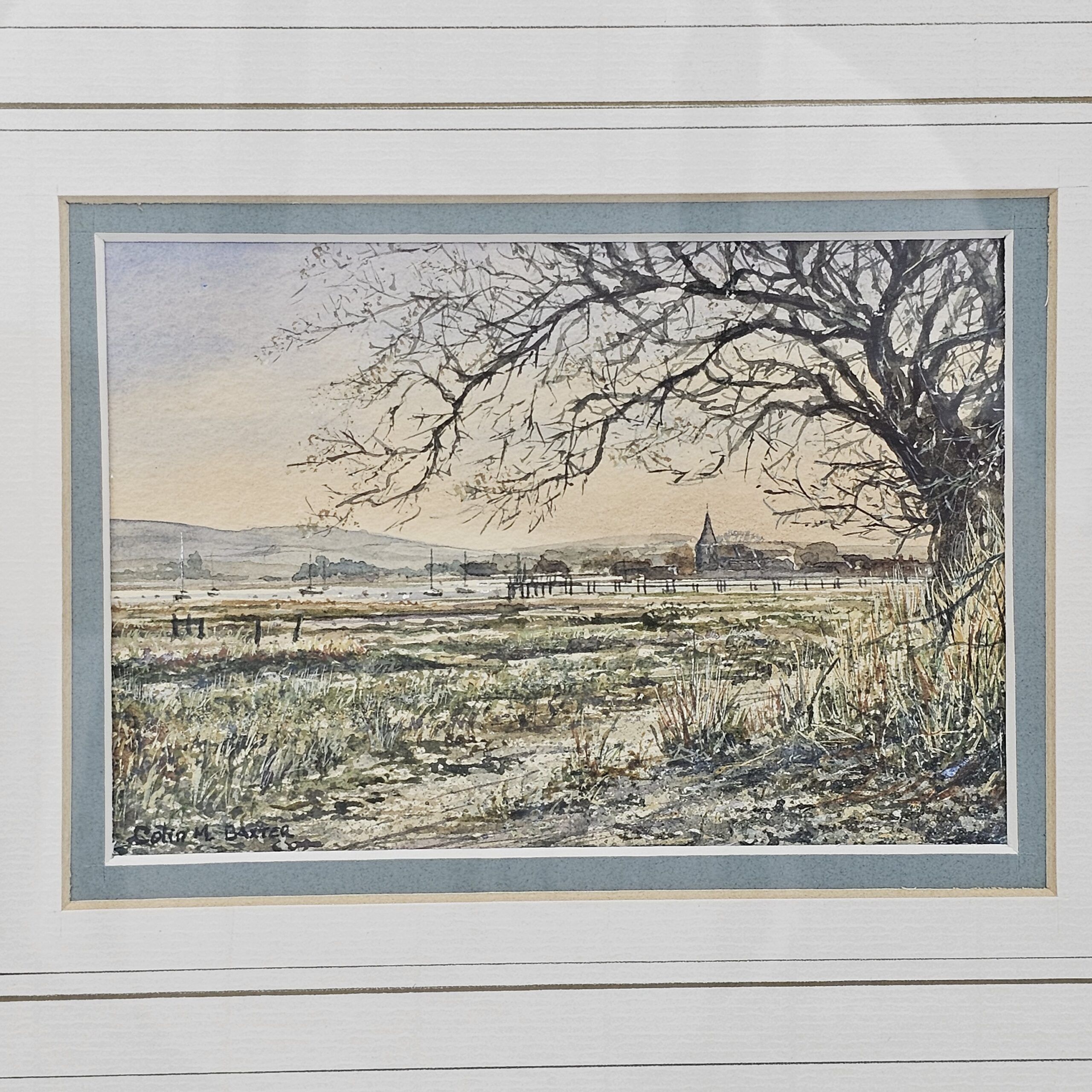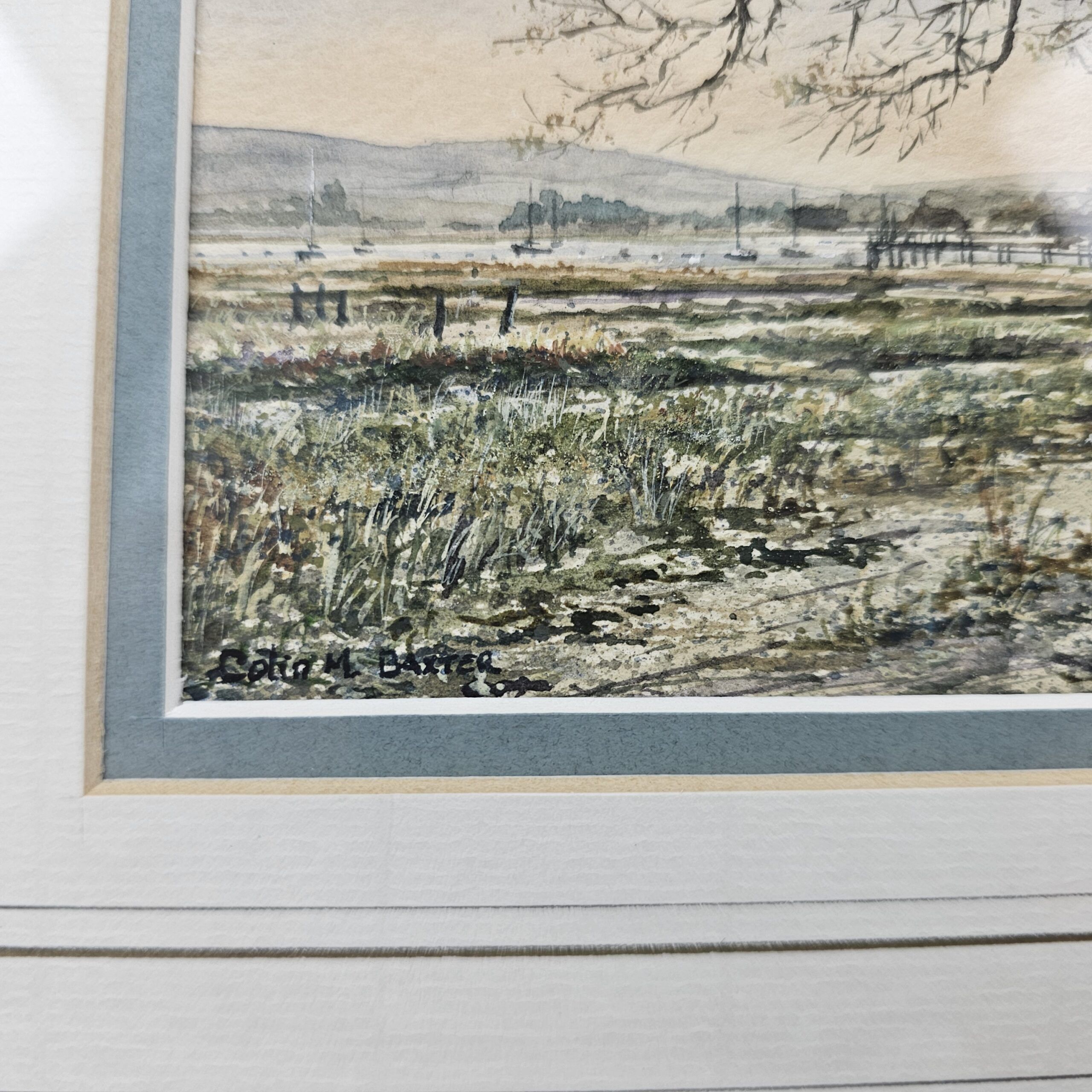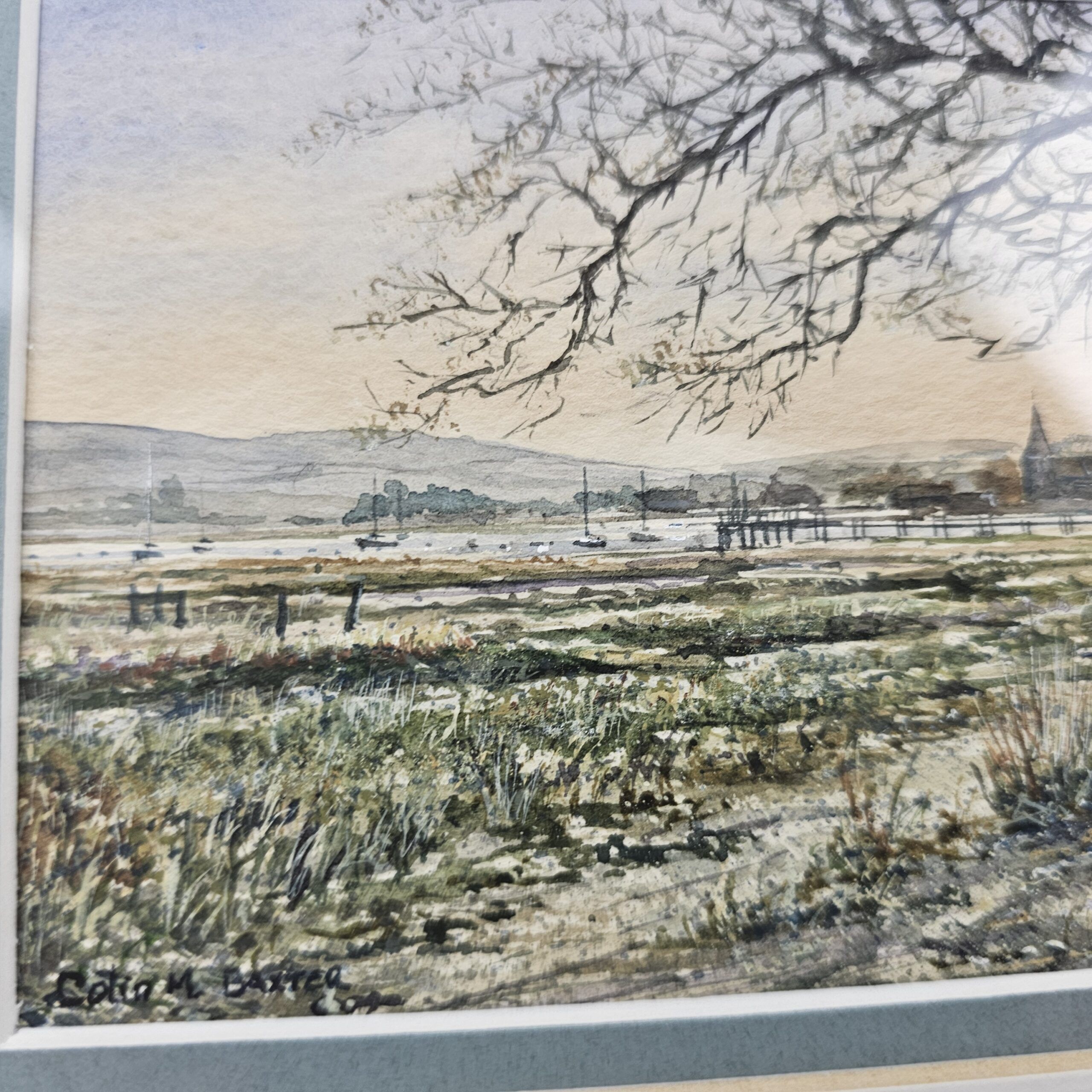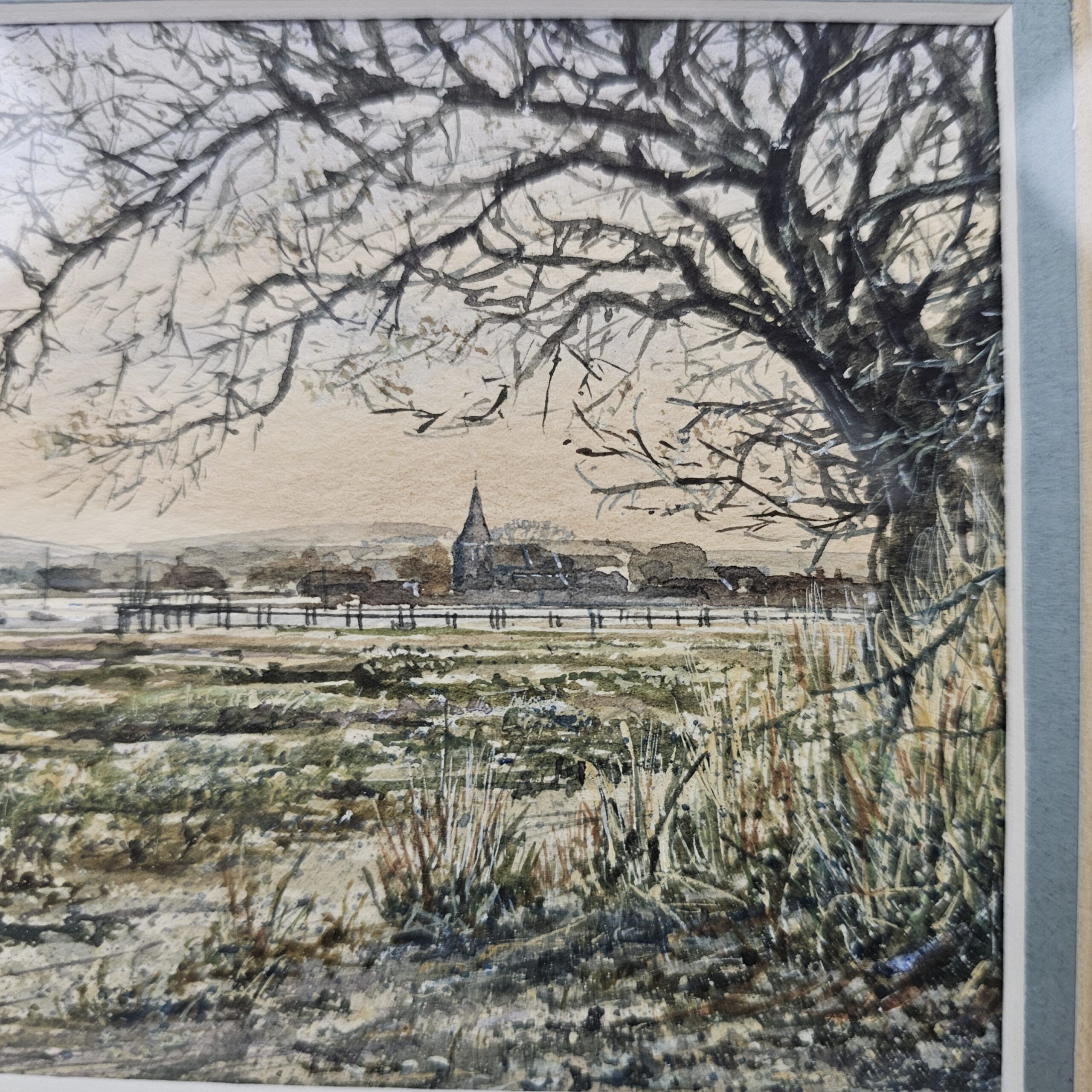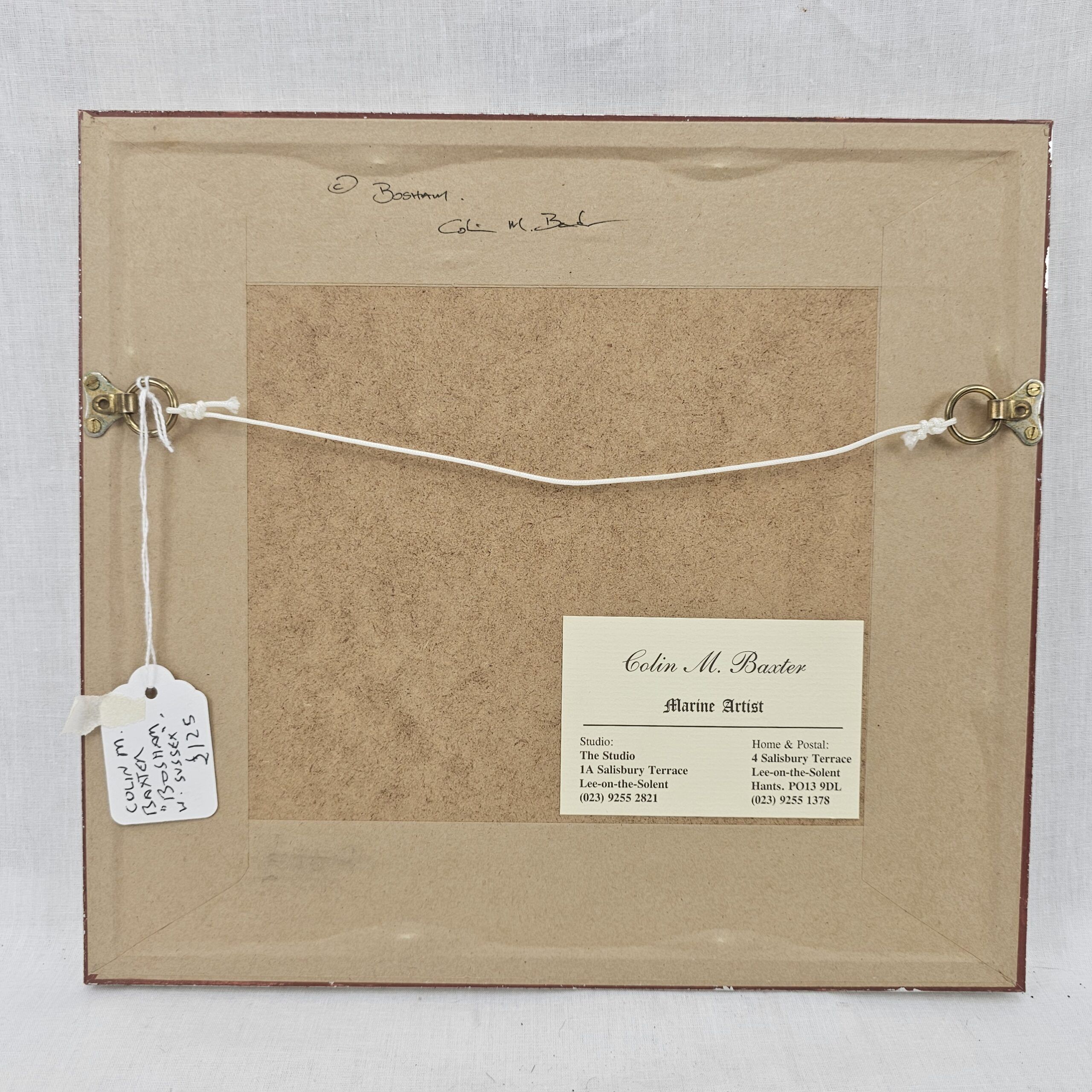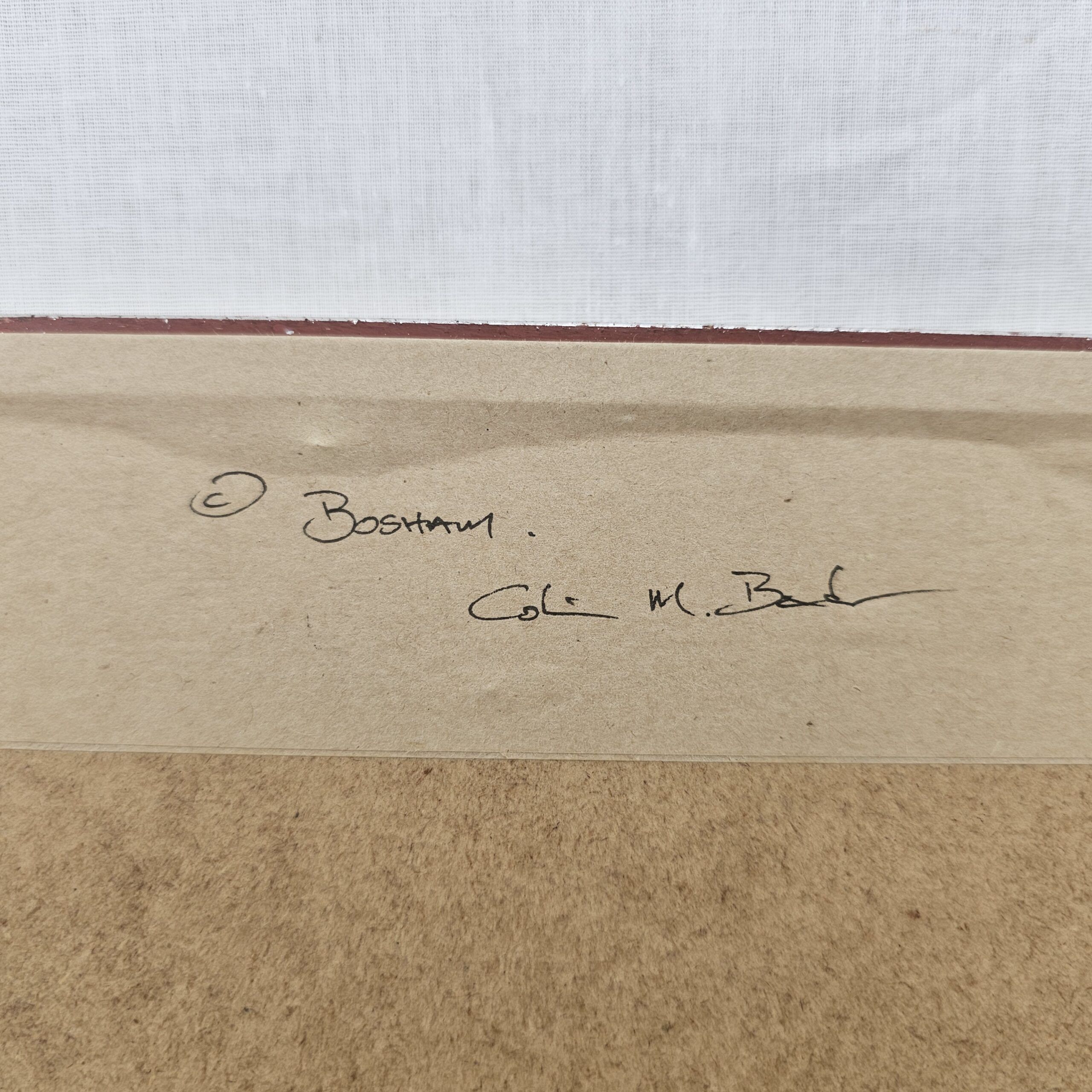~ Watercolour Of Bosham, West Sussex By Colin Baxter ~
A lovely small watercolour by this popular maritime artist depicting the coastal village of Bosham, West Sussex on a crisp winters morning.
The church in the distance is the Holy Trinity Church which is a Grade I listed Anglican church. There was a church on this site in Saxon times, and the oldest parts of the building date from that time.
~ Bosham ~
Bosham is a coastal village and civil parish in the Chichester District of West Sussex, England, centred about 2 miles (3.2 km) west of Chichester with its clustered developed part west of this. Its land forms a broad peninsula projecting into natural Chichester Harbour where Bosham has its own harbour and inlet on the western side.
The site has been inhabited since Roman times, and is close to the famous palace at Fishbourne. Several important Roman buildings have been found in northern Bosham around Broadbridge including a possible temple, a small theatre and a mosaic. The Bosham Head, part of the largest Roman statue from Britain was found nearby. A legionary helmet was found in Bosham harbour and is now in Lewes museum. The helmet is of late Claudian date, the time of the invasion.
Tradition holds that Emperor Vespasian maintained a residence in Bosham, although there is no evidence of this. There are also said to be remains of a building popularly thought to be a villa belonging to Vespasian, at the Stone Wall in the parish. Pottery and tile fragments, of both Roman and early British period, have been discovered in the area, confirming pre-Anglo-Saxon activity. The possible Roman harbour here was part of the natural harbours between Portsmouth and Chichester known as Magnus Portus and its position, as latitude and longitude, was plotted as part of Ptolemy’s Geography.
Bosham is mentioned by name in the Bayeux Tapestry, referring to the 1064 meeting of Harold and Edward the Confessor on the way to meet William of Normandy to discuss who would succeed Edward to the throne:
“Ubi Harold Dux Anglorum et sui milites equitant ad Bosham ecclesia[m]”
(Where Harold, Earl of the English, and his army ride to Bosham church)
Harold’s strong association with Bosham and the recent discovery of an Anglo-Saxon grave in the church has led some historians to speculate that King Harold was buried here following his death at the Battle of Hastings, rather than Waltham Abbey as is often reported. The speculation began in 1954, when the nave was re-paved, and the body of King Canute’s reputed daughter was re-examined. It was discovered that the body of a richly dressed man was buried beside the child’s.[ A request to exhume the grave in Bosham church was refused by the Diocese of Chichester in December 2004, the Chancellor ruling that the chances of establishing the identity of the body as that of Harold Godwinson were too slim to justify disturbing a burial place.
~ Dimensions ~
The frame measures 29 cm (11.25 inches) wide by 26 cm (10.25 inches) tall.
The actual exposed watercolour is 14 cm (5.5 inches) wide by 9 cm (3.5 inches) tall.
~ Condition ~
The piece is in excellent order, one small fleabite to the frame.
#9107



